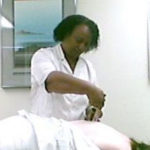
Dr. R. A. Foxworth, FICC, MCS-P
More and more providers are feeling the effects of high deductible health plans when it comes to reimbursement and patient collections. Although the Affordable Care Act has lowered uninsured rates in the U.S. from 15.7% in 2009 to 9.1% in 2015, the number of patients delaying needed health care continues to rise as more of the cost-sharing has shifted from government and third-party payers back to the patient.
As deductibles continue to creep upwards at a faster rate than workers’ wages, and as the number of patients enrolled in high-deductible plans increases, a greater number of insured patients have reported difficulty paying medical bills. With average fees totaling $300-$500 for an initial patient visit, it is no surprise that some practices are seeing fewer new patients and even fewer of those are making a commitment to care. Patients are looking for access to affordable care in your office, but before offering a “cash” discount, remember that offering deals to patients outside of a contractual discount (PPO, MCO, DMPO) can put your practice at substantial risk of fines and penalties.
The best way to keep patients happy, improve clinical outcomes, and enhance collections in your practice is to clearly and openly discuss your fees and payment policy upfront. By conducting a formal Financial Report of Findings in your office, you can clearly outline your treatment plan and the patient’s estimated out-of-pocket expense. Now, more than ever, we need to educate our patients on what their insurance will pay for and what is their own financial responsibility.
When it comes to discounting your fees, compliance is key. Discount Medical Plan Organizations, like ChiroHealthUSA, offer patients with high deductibles the benefit of a lower fee than they might have when using their insurance. Providers who offer these types of memberships to their patients give their patients the same types of discounts that insurance carriers have negotiated for those same services. Many times, the discounts to patients are the same, or lower than the co-pays they are accustomed to paying for their treatment with robust insurance plans. Having a contractual network agreement with a DMPO is what makes the discounts your offer legal and compliant.
If you are a network provider, you know that your provider agreements require you to file claims with the insurance carrier. We want to be a good corporate citizen and encourage you to honor those agreements. But we also have an obligation to let patients know what their payment options are. Thanks to HIPAA/HITECH regulations, you now have the ability to have a patient opt out of filing their health insurance. One of the caveats is they must pay you in full.
We also need to offer affordable payment options, while still maintaining a compliant practice. One of the simplest ways to provide them is by offering automated payments. This is a great tool to ensure that your patients complete their recommended care, reduce missed visits, and eliminate the sting of out-of-pocket payments at the end of each visit. In fact, orthodontists have successfully used this technique for years.
Initiating a solid plan for helping your patients with high deductibles and co-pays today will set you up for success at the start of the new year. To learn more about utilizing these tools in your practice, visit https://www.chirohealthusa.com/resources/conversation-guide-videos/.








 ▶︎
▶︎  Why is the Discount Challenge prize amount $15,024? Because that is the average “per-occurrence” fine for Medicare inducements. That’s not $15,024 per patient, that’s not per provider, that’s PER VISIT. Stinks, doesn’t it? To us, the prize amount is worth the investment if we can help our profession better understand proper discounting.
Why is the Discount Challenge prize amount $15,024? Because that is the average “per-occurrence” fine for Medicare inducements. That’s not $15,024 per patient, that’s not per provider, that’s PER VISIT. Stinks, doesn’t it? To us, the prize amount is worth the investment if we can help our profession better understand proper discounting.